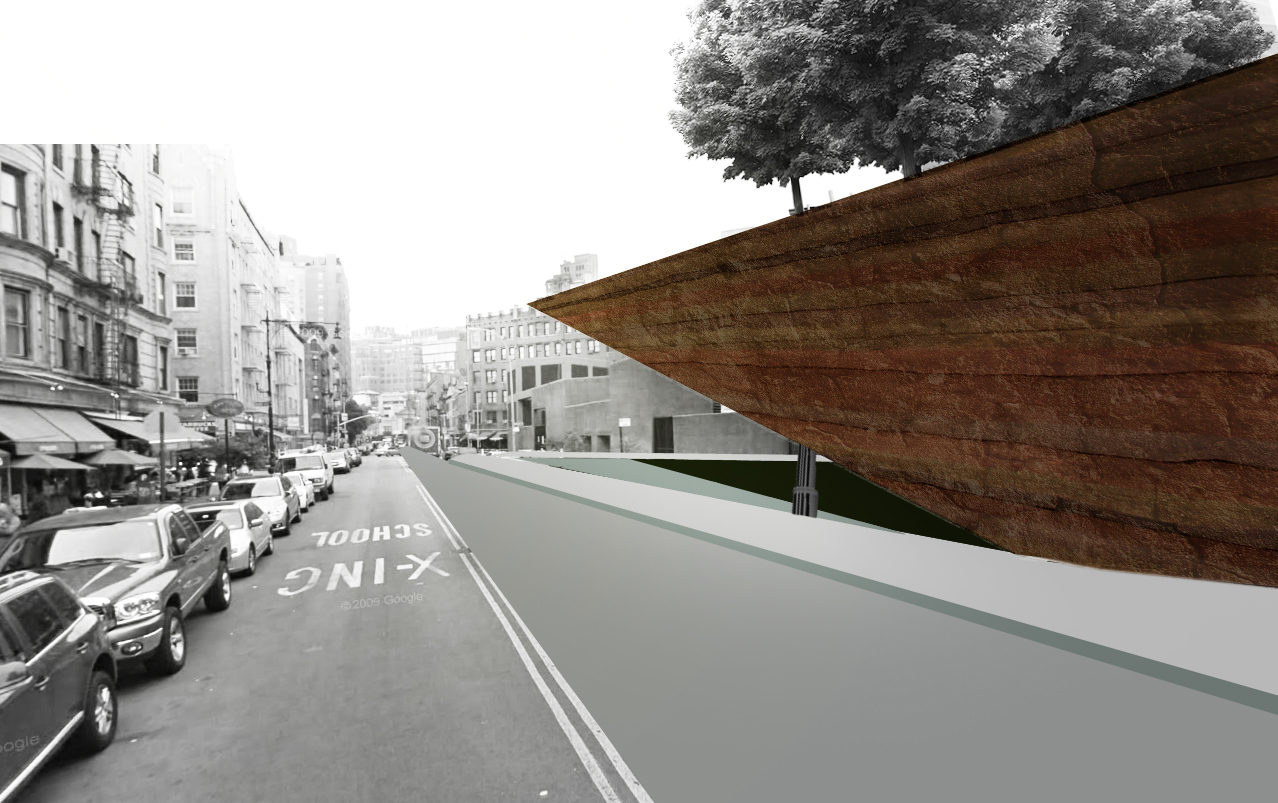Not Yet Over
While no traumatic event ever ceases to have a presence in the culture that it afflicts, the AIDS epidemic is unique in that it is an on-going tragedy with a measurable, foreseeable end. NOT YET OVER, actively looks for an end while attempting to address what it means to memorialize an on-going epidemic.
The overwhelming loss of the epidemic haunts New York City, yet it also creates a resiliency that searches for its end. This monument commemorates that resiliency in all its forms: activism, awareness, research, public policy, to name but a few. The purpose of this memorial is to commemorate the lost and to look towards that unknown day when AIDS will be eradicated.
The overwhelming loss of the epidemic haunts New York City, yet it also creates a resiliency that searches for its end. This monument commemorates that resiliency in all its forms: activism, awareness, research, public policy, to name but a few. The purpose of this memorial is to commemorate the lost and to look towards that unknown day when AIDS will be eradicated.
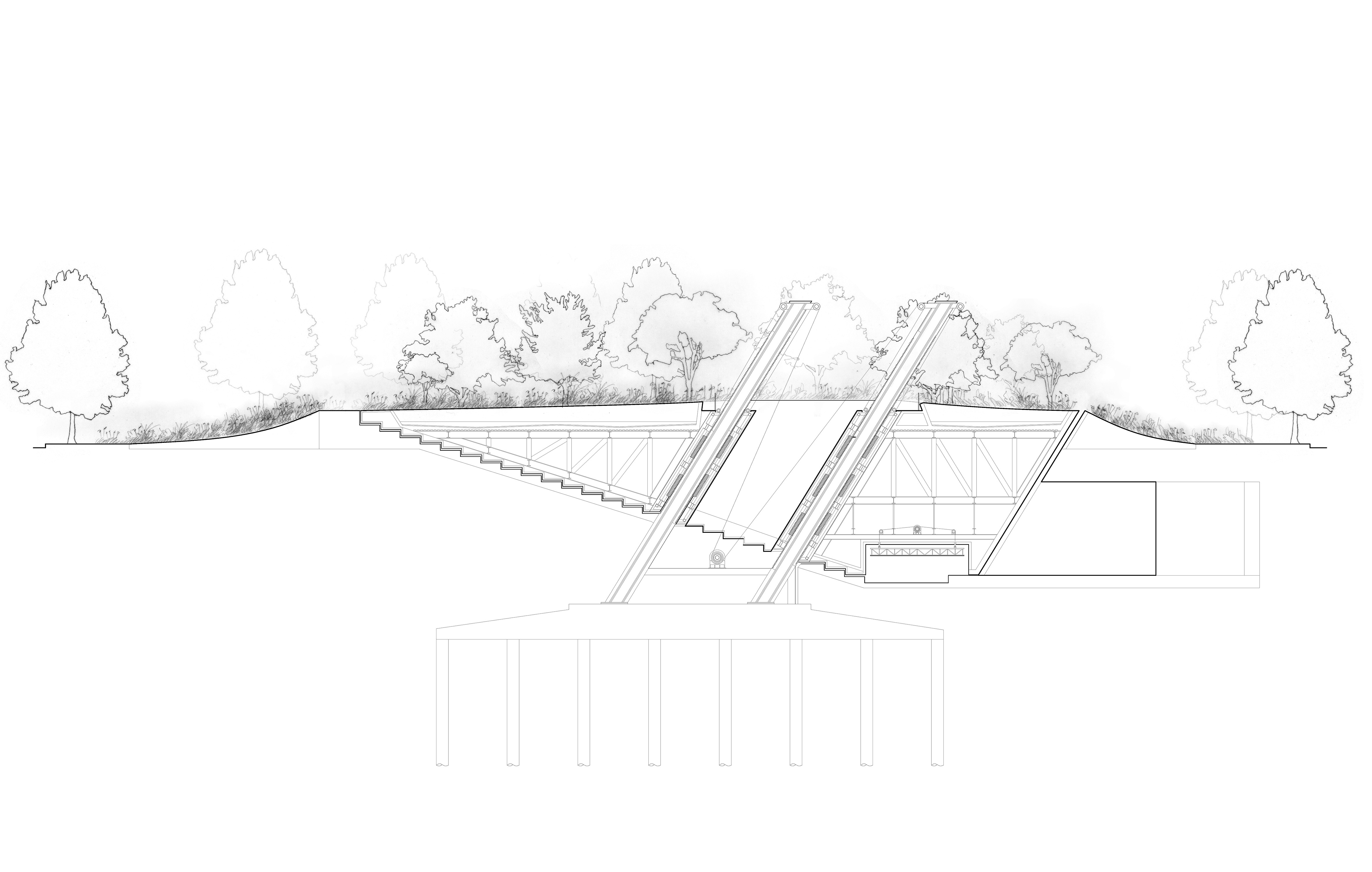
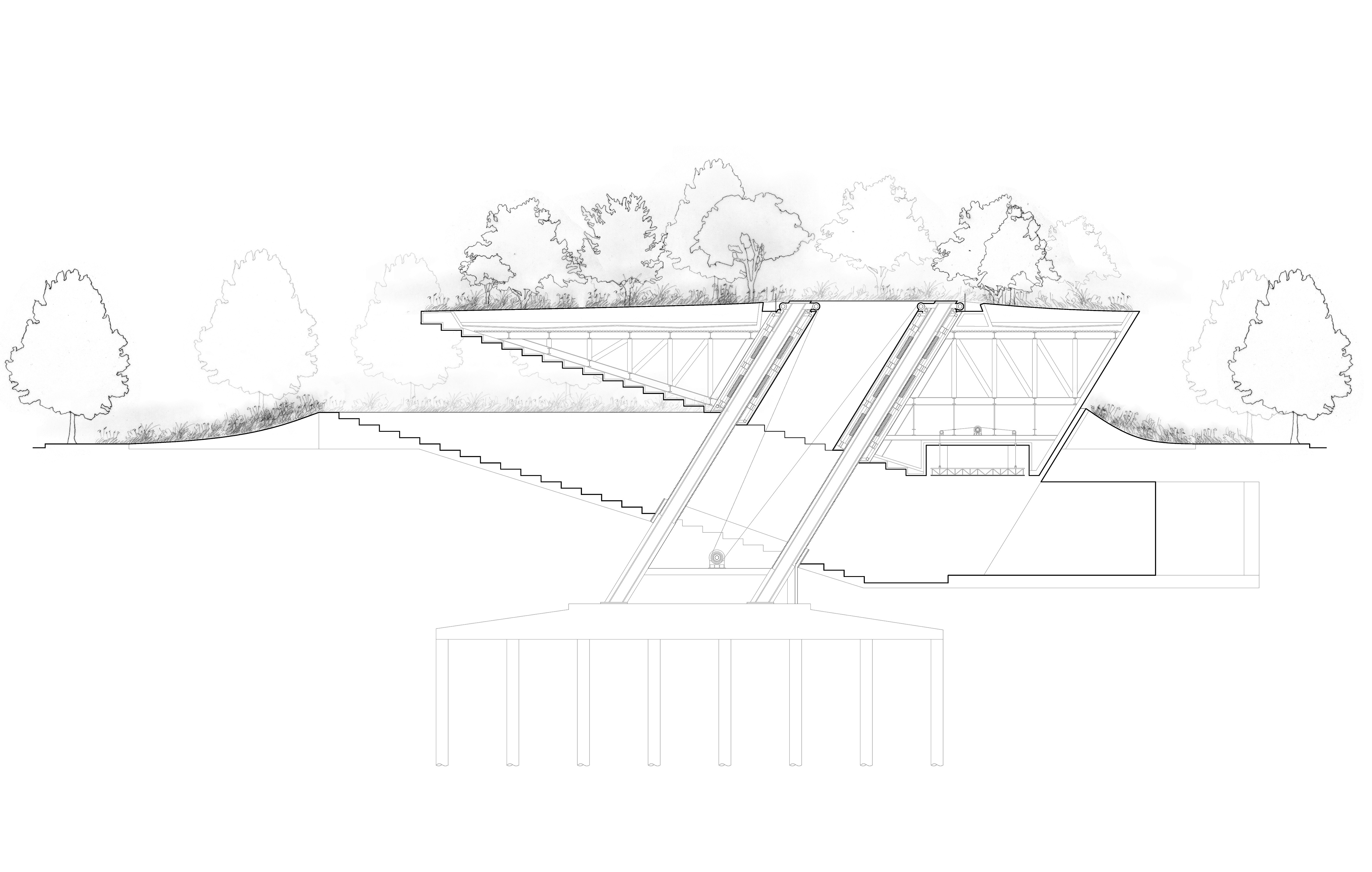
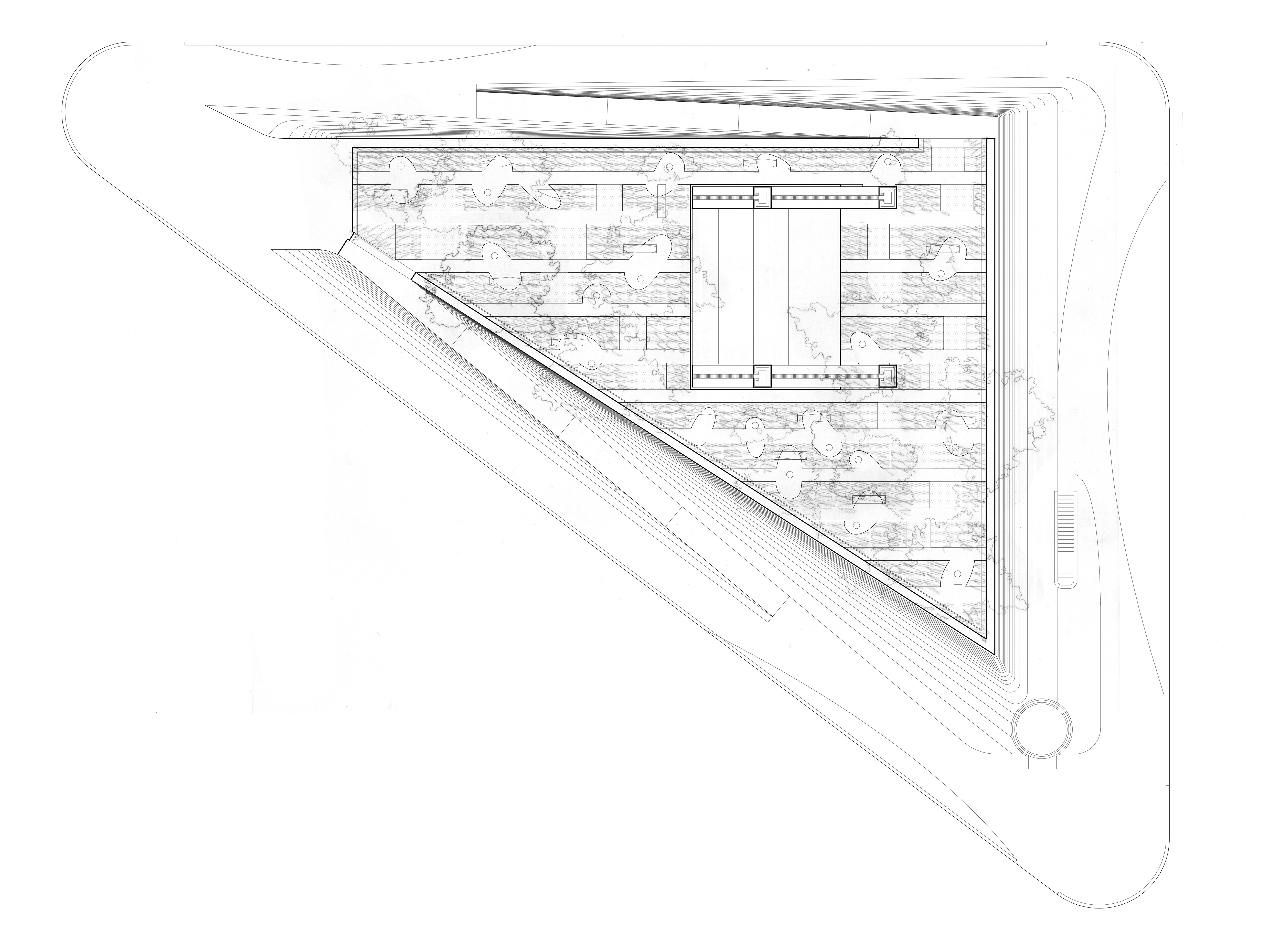
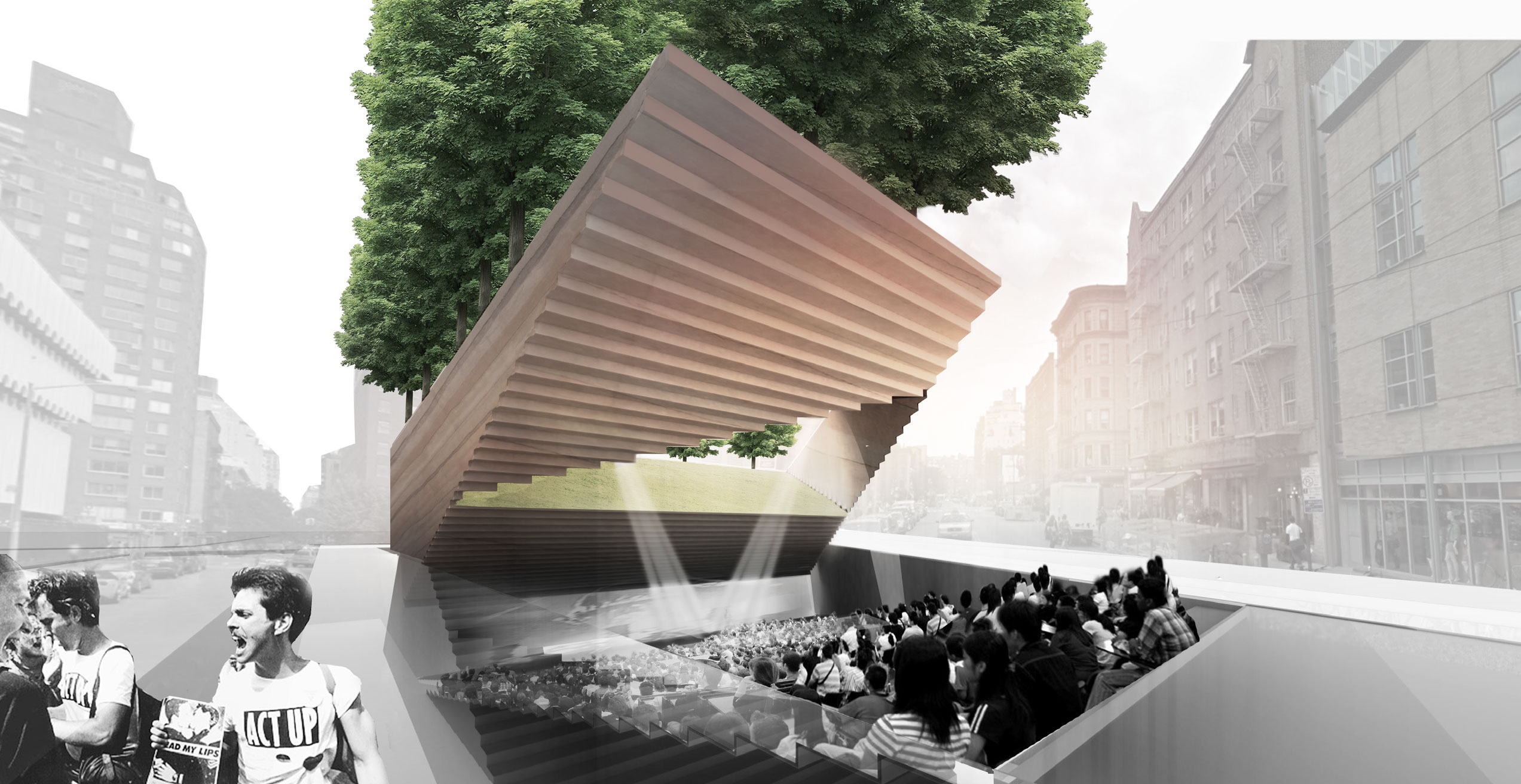
Not Yet Open
Time Period: Present Day - the eradication of AIDS
Until AIDS is eradicated the memorial is Open where it serves the City as a cultural center for activism and awareness.
Since the beginning of the epidemic, the City’s cultural scene has played a large part in fighting the veil of ignorance that shrouded the epidemic from the 1980s on. New York’s cultural scene helped re-shape public perception of the disease which was fundamental for paving the way for major shifts in policy.
As an Open site, NOT YET OVER functions as an amplitheater to rally public health policy makers, hold activism events, and reignite the cultural presence that initially fought the epidemic. Unlike other memorials that solely remember victims or commemorate heroes, an AIDS memorial must also be an active tool to fight what it is attempting to remember.
Until AIDS is eradicated the memorial is Open where it serves the City as a cultural center for activism and awareness.
Since the beginning of the epidemic, the City’s cultural scene has played a large part in fighting the veil of ignorance that shrouded the epidemic from the 1980s on. New York’s cultural scene helped re-shape public perception of the disease which was fundamental for paving the way for major shifts in policy.
As an Open site, NOT YET OVER functions as an amplitheater to rally public health policy makers, hold activism events, and reignite the cultural presence that initially fought the epidemic. Unlike other memorials that solely remember victims or commemorate heroes, an AIDS memorial must also be an active tool to fight what it is attempting to remember.
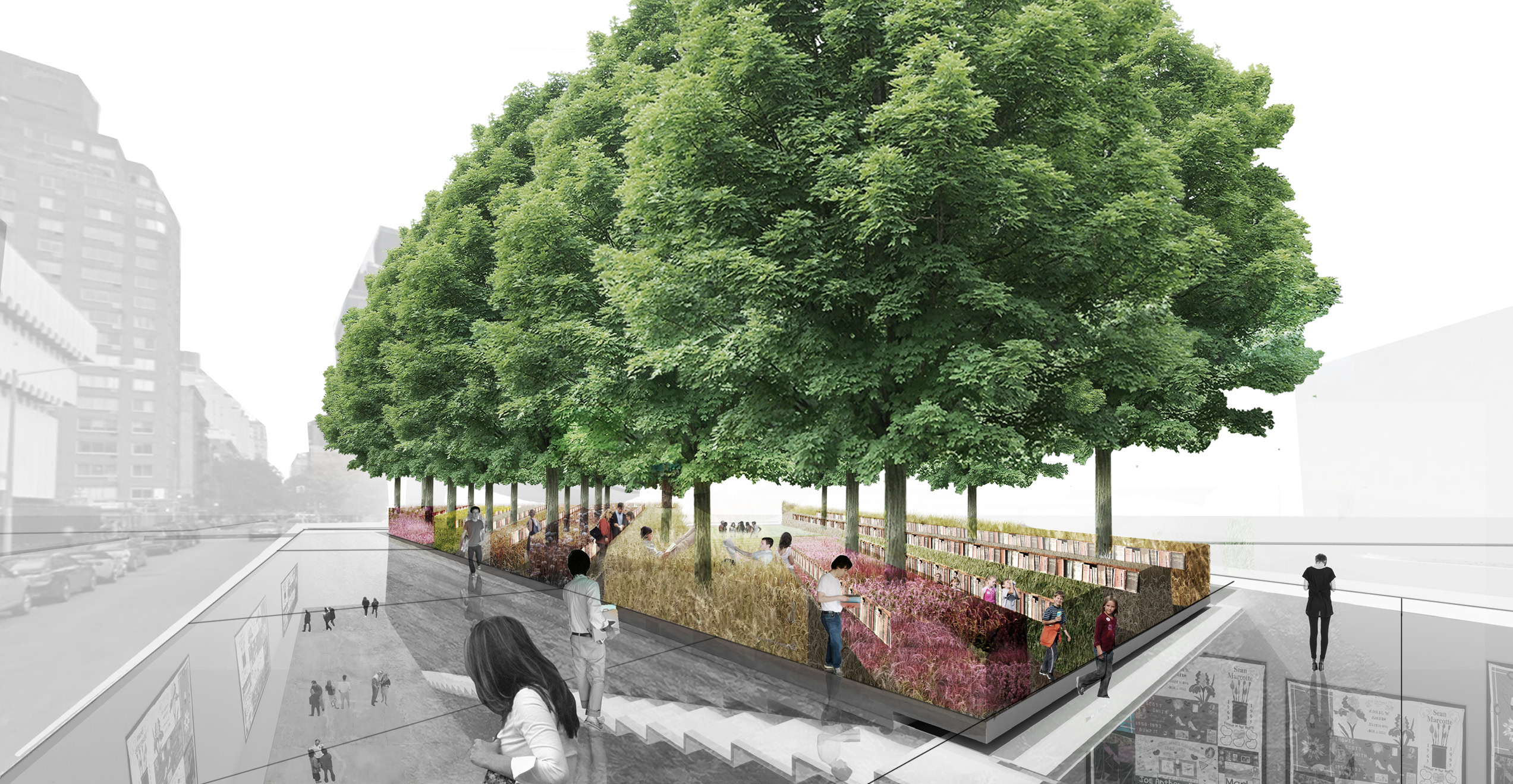
Not Yet Closed
Time Period: Eradication of AIDS - Future.
When the site is closed, it becomes a repository for the epidemic’s history in the City. Closed, it is a park and library; a park seamless part of the City and an outdoor library embedded in the grasses and flower beds of the park that catalogs the history of the epidemic. It holds every piece of literature produced on the epidemic in chronological order starting from its discovery onward. The collection is left open with the anticipation of new material.
The amplitheater, now concealed, lies dormant and is opened to host memorials on major days that remember the victims of a disease that once was. Closing the memorial also aligns the entrance to the gallery space where artists in residence are invited to create new works of remembrance. The sidewalk surround the city is re-paved with glazing exposing the history of the site.
Under the paving, progress.
When the site is closed, it becomes a repository for the epidemic’s history in the City. Closed, it is a park and library; a park seamless part of the City and an outdoor library embedded in the grasses and flower beds of the park that catalogs the history of the epidemic. It holds every piece of literature produced on the epidemic in chronological order starting from its discovery onward. The collection is left open with the anticipation of new material.
The amplitheater, now concealed, lies dormant and is opened to host memorials on major days that remember the victims of a disease that once was. Closing the memorial also aligns the entrance to the gallery space where artists in residence are invited to create new works of remembrance. The sidewalk surround the city is re-paved with glazing exposing the history of the site.
Under the paving, progress.
